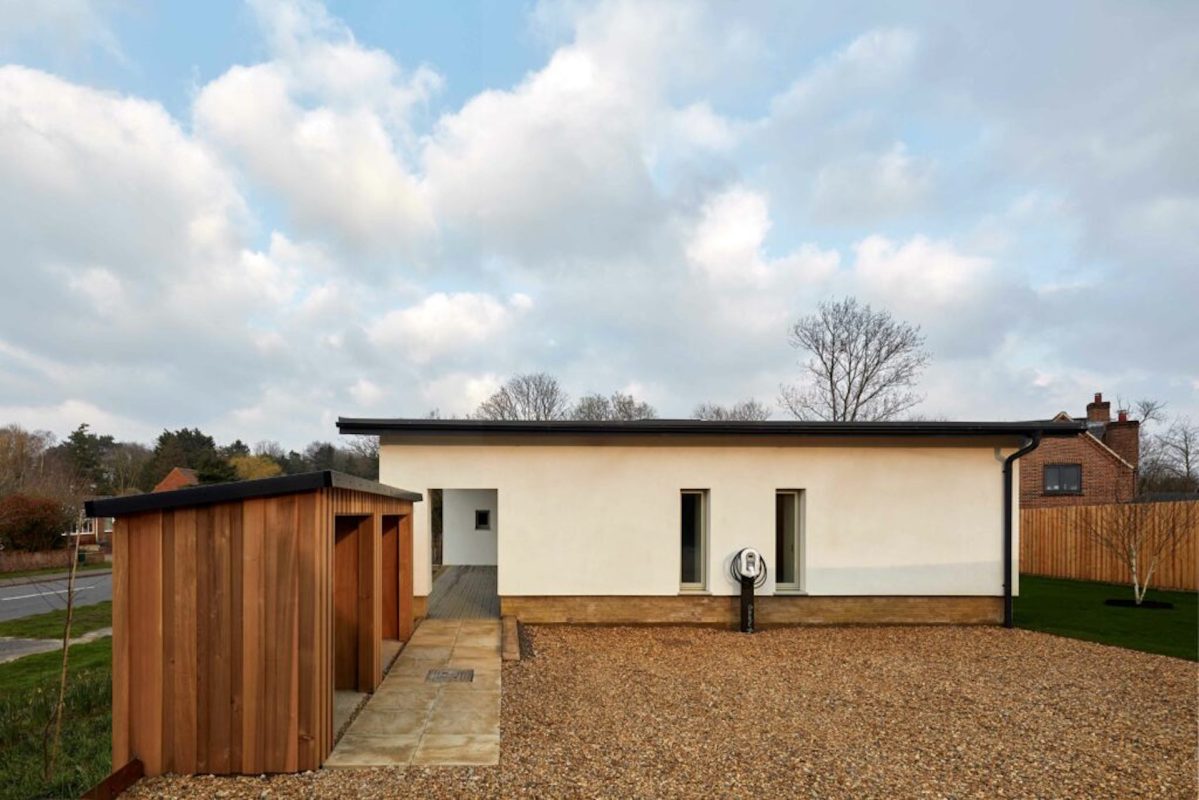An architect and his team have pioneered a mud home in the United Kingdom they are calling the first of its kind, and they believe it could revolutionize home construction.
Designed by Norwich-based architect Anthony Hudson, the home's walls consist of three low-energy building materials: earth, water, and hemp straw, as reported by the Good News Network. When combined, it's known as cob, a material used by various cultures throughout history to build structures.
The CobBauge House, as Hudson calls it, was built as part of a European Union research project on how to make modern homes more environmentally friendly, the news network reported. Modern construction methods are notoriously resource- and energy-intensive, but Hudson sees the vast potential of using the materials right beneath our feet.
Other architects and DIY home builders from Montana to Washington state have realized cob homes' cost- and energy-saving benefits. One man in California even built one for just $200.
While mud homes have existed for thousands of years, "CobBauge is the first-ever Building Regulations compliant form of cob building," according to Hudson's company, Hudson Architects.
The project took six years to complete, but Hudson has dreamed of using earth to build homes for far longer. However, traditional cob doesn't meet modern building standards, so he had to make a few adjustments to bring it into compliance.
"The challenge was to create a home using earth as the primary building material, but which could also be thermally insulated. Earth is a very sustainable way to build, especially because it's so widely available here in the U.K. The problem is that to make it an effective insulator, you usually have to make the walls incredibly thick, which is impractical," Hudson told the Eastern Daily Press.
Hudson and local builders Grocott and Murfit decided to combine pure cob with insulating hemp straw to make the walls nearly two feet thick without sacrificing energy efficiency. The home also reduces energy use with triple-glazed south-facing windows, deep eaves, and wood fiber insulation for the floors and roof, as detailed by the company's website.
In addition, the mud house encourages biodiversity with its pitched sedum (a type of succulent) roof.
The CobBauge House contains an air-source heat pump for heating, which significantly reduces energy consumption and doesn't release planet-warming pollution. The lack of concrete used in construction is the icing on the cake since cement is the most energy-intensive building material, per the Energy Information Administration.
While Hudson said the team needs to work out a few kinks before mud houses hit the market, he's confident that CobBauge has a solid future.
"Although the materials are cheap and easy to source, the building method is very time-consuming. At the moment, it all has to be done by hand, so labor costs run high. However, our next step is to figure out how we can refabricate buildings to cut that down. Once we've worked that out, my guess is this will be a very attractive method," Hudson told the Daily Press.
According to the Good News Network, the home was open in March for public viewing.
Join our free newsletter for weekly updates on the coolest innovations improving our lives and saving our planet.









